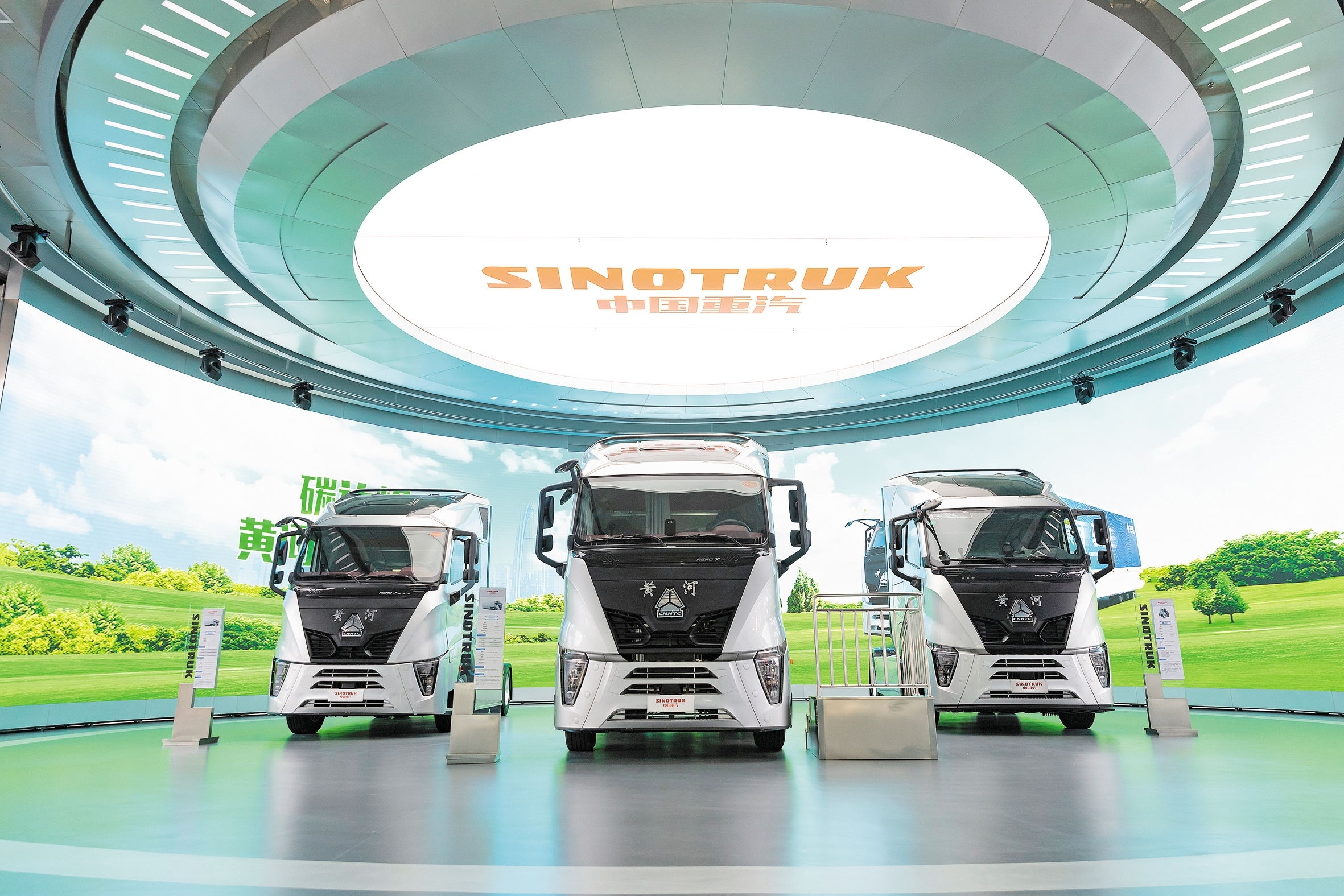Editor’s Note: Since the 18th National Congress, General Secretary Xi Jinping has inspected Shandong Province six times, expressing high hopes for the comprehensive deepening of reform in the region and providing direction for its development. On the morning of June 30 at 10:00 a.m., China Central Television (CCTV) broadcasted a major planned large-scale multimedia live program titled “Comprehensively Deepening Reform: The Unique Modernization of China,” focusing on Shandong. Reporters ventured into SINOTRUK's Laiwu factory to explore the high-end, intelligent production workshops, highlighting SINOTRUK's journey of comprehensive reform and the establishment of a modern enterprise system.

In recent years, SINOTRUK has undergone extensive reforms to establish a modern corporate structure. It has gradually emerged from a low point, and won the “Double First”in China's heavy-duty truck sales and market share in 2023. How was this transformation achieved?
At the welding workshop of SINOTRUK's Laiwu factory, reporters observed that the scene where workers previously held a welding mask in one hand and a welding gun in the other is now a thing of the past; robotic systems have completely replaced manual welding in the intelligent factory. Steel plates flow into the welding workshop and come out as the front ends of the “New Yellow River”heavy-duty trucks.
It took only 280 days from groundbreaking in 2020 to the off-line of the first heavy-duty truck at SINOTRUK's Laiwu factory, showcasing the key term “high-end.” This facility stands as one of the highest-level heavy truck manufacturing bases globally and symbolizes the rebirth of SINOTRUK through reform.
The latest batch of orders on the production line comes from overseas, supported by 110 robots and 109 automated guided vehicles. Each robot takes about 3-4.5 seconds to weld a single joint, and each truck front has around 3,000 such joints. The entire workshop consists of 38 processes, and it only takes two and a half hours to transform a single part into a complete truck front.
The most critical process among all is the cab assembly, where six robots work collaboratively—some transport parts while others perform welding, and before long, the truck front takes shape. One particularly notable statistic is that the accuracy rate for key joint areas has reached 100% at ±1 mm tolerance, showcasing the precision of robotic work. The length, width, and height of the truck front are all approximately 2 meters, and the assembly error cannot exceed 1 mm which is roughly equivalent to the thickness of an ID card.
Following the high-end manufacturing is the intelligentization. Behind the reporters, a large screen serves as the “smart brain” of the welding workshop, connecting to the central control system. In addition to controlling the robots, it is responsible for order allocation, quality monitoring, and more, demonstrating extremely high levels of intelligence. It is capable of continuous operation for about 20 hours.
The advancements in high-end manufacturing and automation have led to a liberation and development of productivity. In the welding workshop, only five workers are needed to manage the two production lines, contrasting sharply with photos taken four years ago of the old welding workshop, where about 400 people were required for the same two lines. From 400 workers down to just 5, the current labor force is merely 1/80 of what it used to be.
After the cab undergoes painting and washing processes, it is transported to the final assembly workshop for joining with the chassis. The heavy chassis can be moved by automated guided vehicles (AGVs). These small vehicles are arguably the busiest workers in the workshop. Despite their compact size, they have a load capacity of nearly 10 tons and can navigate automatically, identifying routes and stopping to avoid obstacles if necessary. Notably, these vehicles can also charge while moving, achieving wireless charging through underground embedded cables, making them very flexible.
During the installation of the cab, workers first use remote controls to precisely position the cab before securing the connection points. The entire process flows seamlessly and efficiently. In the final assembly workshop, there are more than 300 processes, and thanks to the skilled coordination between human workers and machines, each process can be completed in under 5 minutes, meaning a heavy-duty truck can roll off the line every 5 minutes.
Contrasting with the smart workshop, the number of workers in the final assembly area is noticeably increased. The overhead conveyor belt carries many cabs in different colors and models, indicating that this production line can simultaneously manufacture various vehicle types. This kind of 'flexible production,' characterized by multiple varieties, small batches, and higher-end products, requires a larger pool of highly-skilled technical talent. For example, the team beside the reporter has an average age of only 23 years, yet possesses advanced skills, with nearly one-third of the team members being senior technicians.
SINOTRUK's achievements today are attributed to years of deep reforms focused on problem-solving, unwaveringly concentrating on its core business, and eliminating 98 non-core enterprises, realizing asset monetization of nearly 10.9 billion yuan. At the same time, it resolutely cut off illegal profit chains in procurement, saving costs amounting to 27 billion yuan. Additionally, SINOTRUK has increased its research and development investment, totaling 15 billion yuan over the past five years, which is equivalent to the total from the previous 15 years. The establishment of the 'Three Capabilities' mechanism—where 'cadres can be promoted or removed,' 'employees can join or leave,' and 'income can be high or low'—has significantly invigorated the workforce.
In recent years, SINOTRUK has also begun to make significant strides in overseas markets. Within just five minutes during this live broadcast, a heavy-duty truck from SINOTRUK has already rolled off the production line. Soon, it will be dispatched to international markets. In the first five months of this year, SINOTRUK's exports of heavy trucks surpassed 60,000 units, continuously breaking monthly export records for China’s heavy truck industry.









 鲁公网安备37010202000616号
鲁公网安备37010202000616号